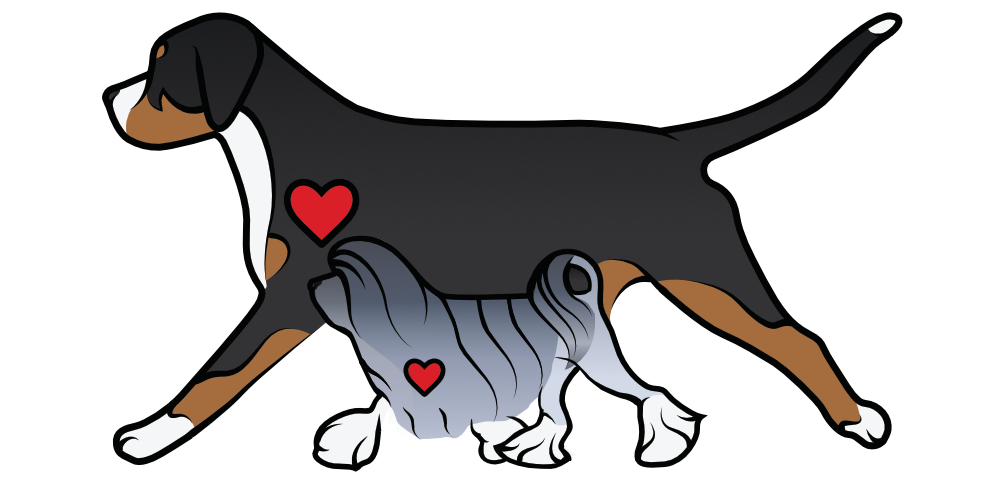[youtube=://www.youtube.com/watch?v=XwApNv2mruU&w=560&h=315]
How to Build Training Shafts and a Cart for your Dog – Video
[youtube https://www.youtube.com/watch?v=EQIfoTOIraM?list=UUWCSM47hFwIk22H1FcZ2loA]
Harnessing and Hitching During a Draft Test
[youtube https://www.youtube.com/watch?v=pc4Dqk6C2FA&w=640&h=480]
This video shows the harnessing and hitching section that is common in many draft tests.
Teaching Your Dog to Love Carting
[youtube https://www.youtube.com/watch?v=LxRwq5Dnq2w&w=640&h=480]
These are the first few steps for teaching your dog to love carting. I strongly believe that this is the most important step in carting.
Teaching a dog to back up in cart
Vesta, a 19 month old Greater Swiss Mountain Dog, demonstrates how to back up into a cart. She also shows how to make turns in cart, back up in cart, and a moving stand.
Vesta is owned by Jennie Chen. Her registered name is Seneca’s Roman Candle Reigns Vesta, CA, HIC, NWPD. You can visit her at romanreign.com.
[youtube https://www.youtube.com/watch?v=ACnhPLlSuyQ?list=UUWCSM47hFwIk22H1FcZ2loA]
How to Measure a Dog For a Drafting Harness
[youtube https://www.youtube.com/watch?v=5Z0-W9OTmOQ?list=UUWCSM47hFwIk22H1FcZ2loA&hl=en_US]
Starting a Puppy in Conformation
Someone in our regional club asked about handling classes, and I wrote this response. I thought it might be good to share publicly as well. Location/person specific information has been removed. Enjoy!
Jennie
I would recommend that you not start conformation classes with your puppy until you’ve tried it without your dog or with trained dogs. It will take you longer to learn how to handle than it will take your dog to learn how to perform in the conformation ring. The danger in taking a puppy into conformation as a first time conformation handler is that the puppy might find it boring or uncomfortable while you are trying to learn. By the time you know what you are doing, the puppy might already dislike conformation.
I would highly recommend that you go and watch a few of the classes first (or watch YouTube videos on conformation handling), do some intense reading (it will be a great investment), and take quality general training classes. Regardless of what sport you pursue, you will need to learn how to communicate with your dog and perform as a team. I don’t think that conformation training is any different from competitive obedience training or flyball or even weight pull. It is still about the relationship you have with your dog and your communication.
Also, all my dogs are trained in competitive obedience and conformation. I strongly believe that they can do both. Many people think that dogs can only do one or the other. All my dogs have been trained to free-stack separately from automatic sits. I wouldn’t discourage training in both if you are so inclined. You should not limit your possibilities with the notion that a dog can only learn or do one thing at a time.
Here’s a list of books I recommend:
Building Blocks for Puppies by Bobbie Anderson: http://www.amazon.com/Building-Blocks-Performance-Bobbie-Anderson/dp/1577790375
I recommend this book to anyone and everyone. A dog is a pet first. It doesn’t matter what your dog does on the weekends, your dog should find you to be exciting all the time. Your dog should also mind you in and out of the ring. You do have to live with the dog outside of the show ring as well.
All of Pat Hastings books:
http://www.dogfolk.com/puppydevelopmentbook.htm
http://www.dogfolk.com/k9structurebook.htm
http://www.dogfolk.com/trickstrade_revised.htm
I just went to one of her seminars yesterday, and I always learn something new. It is always best to learn about canine structure so that you know your dog’s strength and weaknesses. As a handler, you should learn how to downplay or accentuate those points in your dog.
The Winning Edge Show Ring Secrets by George Alston:
http://www.amazon.com/The-Winning-Edge-Secrets-reference/dp/0876058349
This is a great primer for first time owner-handlers. There are great photos and diagrams along with grooming tips.
There’s many other conformation books out there as well. It might seem like quite a bit of information at once, but I’m of the philosophy of great preparation and learning from other people’s mistakes. Always better to learn before you pay that entry fee.
Lesson: Setting yourself up for the Tight Narrows
Lesson: Setting yourself up for the Tight Narrows
Really tight narrows can be challenging. With a dog that can perform the side-step, and this video shows an easy way to navigate your dog through very narrows.
Lesson: The Back Up In Cart
Lesson: The Back Up In Cart
Many draft tests will require your dog to back out of cart and to back in cart. The length of the back can vary from 1 foot to 5 feet, but just to be safe, teach your dog to back 20 feet. Teaching your dog to back is an unnatural behavior, and there are countless ways to teach a dog to back. I only explained a couple in this video, and I may be updating it with other methods over time.
Lesson: Turns, Side Stepping, 360s, and 90 degree turns
| Lessons: Turns, Spirals, Side Step, 360s, and Navigating a 90 degree turn
Teaching a dog to turn in cart is a long process, and I urge you take your time with this. Pushing a dog further than it is comfortable may cause the dog to lose confidence or spook in cart. I start teaching turns by making large spirals in the cart. Sometimes the radius of such spirals begin at 50 yards. Once the dog is comfortable doing smaller circles (~20 ft in radius), I will start to teach a dog to turn and to perform side steps. Once a dog can side step, I teach the dog how to do 360 turns. Here’s two videos demonstrating how to teach a turn and how to navigate a 90 degree turn. Teaching a dog to turn and perform 360s Navigating a 90 degree turn |
